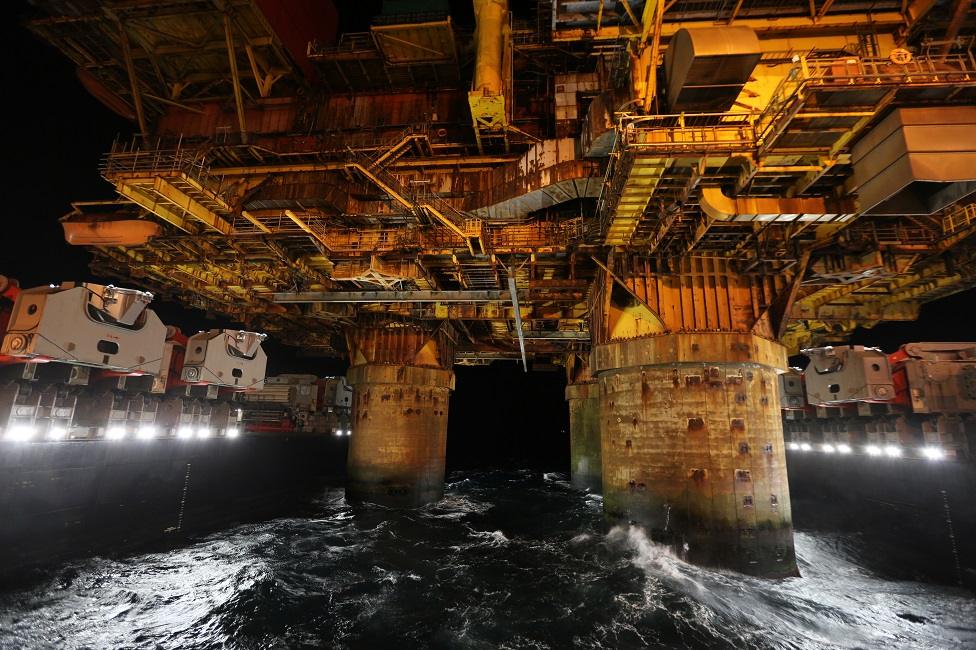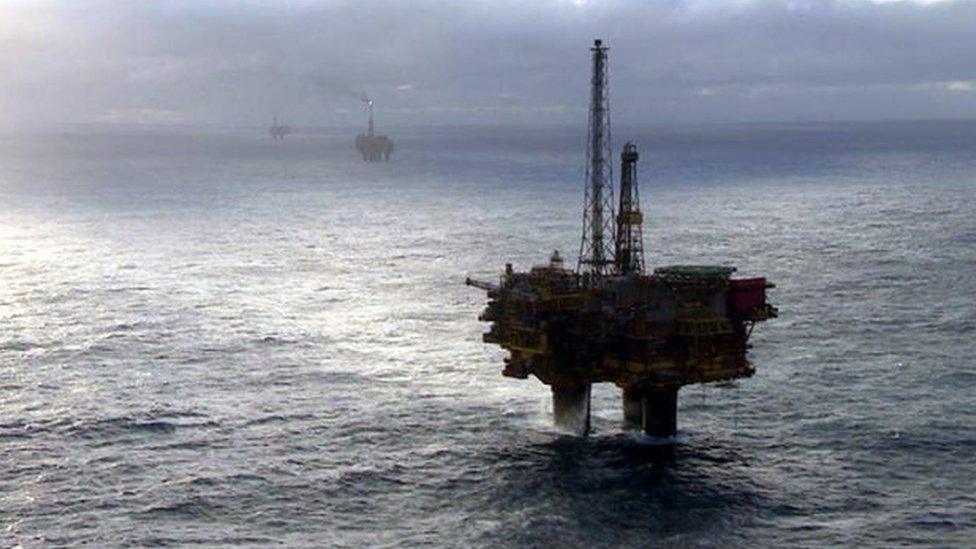Brent Delta platform removed from legs
- Published
The platform was lifted on to a huge purpose-built ship which will transport it to England to be scrapped
The first major decommissioning project in the North Sea has been completed with the removal of the Brent Delta platform from its legs.
It has been lifted on to a huge purpose-built ship which will transport it to England to be scrapped. Shell wants to leave the legs in place.
The 24,000 tonne Brent Delta platform topsides sat on a three-legged gravity-based structure in 140 metres of water.
The platform lies 115 miles north east of Shetland.

Pioneering Spirit approaching Brent Delta

Ship approaches Brent Delta at night

Pioneering Spirit moving in around the Delta
It is one of four which is due to be removed from the field in the coming years.
Unusually for a platform, the legs of Brent Delta are made of concrete which makes it much more difficult to decommission than one with steel legs.
Allseas, the company which operates the decommissioning vessel Pioneering Spirit, said it had set a world lifting record with the removal of the platform.
The topsides have now been sea-fastened on board the vessel for transportation to Teesside.

Connecting the yokes to the platform

Yokes connected to the platform

All yokes connected, pre-tensioning and deballasting

Fast lift of the Delta topsides
What is Brent Delta?
Brent Delta was one of the first platforms to be built in the very early days of Britain's oil and gas industry.
It sits about 115 miles (185km) north-east of Shetland in a cluster of four platforms which make up the Brent field. Its sister, Brent Bravo, produced its first oil in 1976.
At its peak, in 1982, the four platforms were producing more than half a million barrels of oil a day.
Being one of the first, it's now at the end of its life and has to be removed.
Brent Delta is the first major piece of infrastructure to be decommissioned in the North Sea.
More than 100 platforms are forecast to be completely or partially removed over the next decade in the waters of the UK and Norway.
- Published28 April 2017

- Published8 February 2017

- Published23 November 2016

- Published5 July 2016
